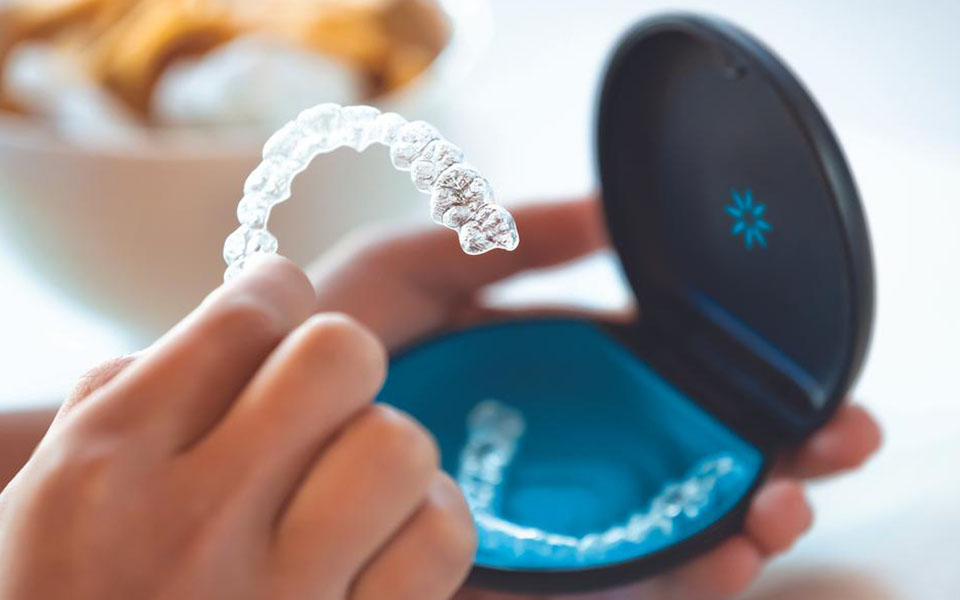When considering orthodontic treatments, many patients evaluate the benefits of lingual braces or Invisalign clear aligners. Both options are designed to straighten teeth with minimal visibility but differ in various aspects including convenience and cost.
Lingual braces are a type of orthodontic treatment that functions like traditional braces. The key difference is that they are positioned on the inner surfaces of your teeth, making them less visible compared to standard metal braces, which are placed on the front of your teeth.1
The pros of lingual braces
Lingual braces offer several benefits that make them an appealing option for those seeking orthodontic treatment. Here are some of the key advantages:
Discreet design: One of the main benefits of lingual braces is the convenience of their hidden appearance. Because they’re placed on the back of your teeth, most people won’t notice them, allowing you to maintain a more natural smile during treatment.2
Effective for bite correction: Lingual braces are designed to address a variety of orthodontic issues, including most bite problems. They can effectively align your teeth and improve your bite, just like traditional braces.2
Customizable fit: Each set of lingual braces can be adjusted to fit your teeth, making them more personalized and effective during treatment.2
The cons of lingual braces
While lingual braces have their benefits, there are also several potential drawbacks to keep in mind when choosing your orthodontic treatment:
Discomfort: You may experience discomfort, particularly around the tongue, as the brackets and wires are positioned closer to the inside of the mouth. This can take some time to adjust to.2
Speech impediments or lisps: While adjusting to wearing lingual braces, you may notice a temporary lisp or speech impediment.2
Higher cost: On average, lingual braces cost more than their traditional braces counterparts.2
Longer treatment duration: Achieving your perfect smile may take longer with lingual braces than with traditional metal braces.2
Cleaning challenges: Lingual braces can make it more difficult to maintain proper oral hygiene.3 Because they are placed on the back of your teeth, it can be harder to brush and floss effectively, which can increase your risk of gum disease,4 tooth decay,5 cavities,6 and canker sores.6




